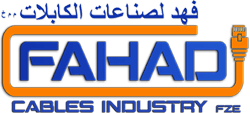Blog
Exploring the Network Cable Cat6 SFTP Series by Fahad Cables Industry FZE
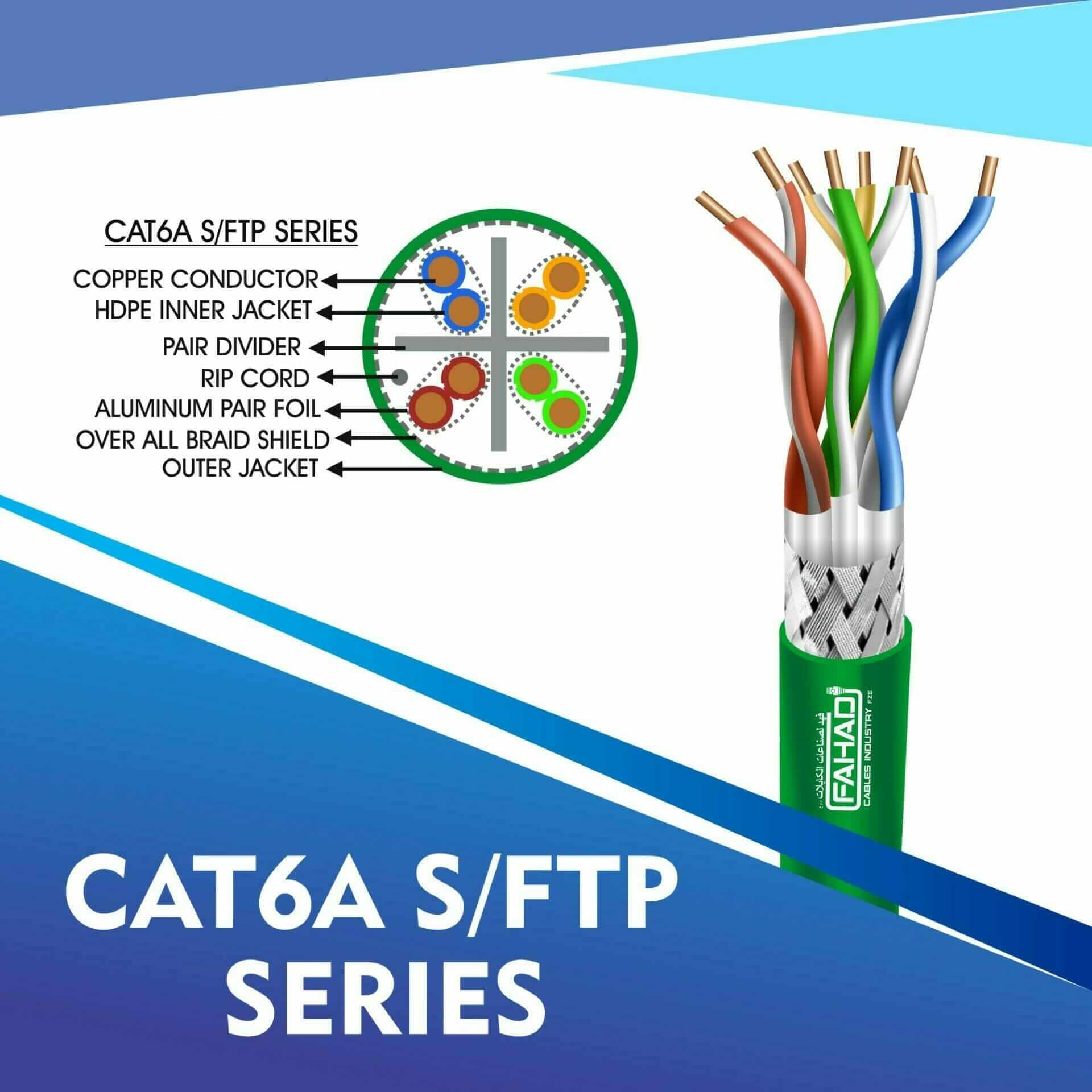
Introduction to Network Cables
Network cables are essential components of contemporary communication systems, facilitating the transfer of data between devices across various locales. They serve as the backbone of connectivity for numerous applications, including internet services, local area networks (LANs), and data centers. The effectiveness of these cables directly impacts the performance of networks, making them integral to both personal and professional settings.Network Cable Cat6 SFTP Series
Network cables are categorized according to various standards that denote their capabilities, transmission speeds, and shielding methodologies. Generally, these categories include unshielded twisted pair (UTP), shielded twisted pair (STP), and fiber optic cables. In particular, Cat6 cables have gained prominence due to their enhanced performance characteristics compared to their predecessors. Designed to support speeds up to 10 Gbps over short distances, Cat6 cables provide significant advantages for modern networking requirements.
Advancements in network technology have led to the development of the Cat6 S/FTP (Shielded Foiled Twisted Pair) series, which offers superior shielding against electromagnetic interference. This shielding comprises both foil and individual pair shielding, minimizing crosstalk and allowing for more reliable data transmission. With their ability to support high-frequency signals, Cat6 S/FTP cables are well-suited for environments where high bandwidth and low latency are critical, such as in data centers and enterprise networks.
In summary, network cables play a crucial role in the functionality of communication technology. Their classification into various categories provides users with options tailored to specific networking needs. The Cat6 S/FTP series particularly exemplifies ongoing advancements in network cabling, illustrating the industry’s commitment to enhancing data transmission and connectivity standards. As technology continues to evolve, the significance of these cables will remain at the forefront of networking solutions.
Understanding Cat6 S/FTP Cables
Cat6 S/FTP cables represent a significant advancement in networking technology, offering improved performance and shielding compared to their predecessors. The term “Cat6” refers to Category 6 cabling, which signifies a standard defined by the Telecommunications Industry Association (TIA) for high-speed data transmission. Cat6 cables are designed to support data rates of up to 10 Gbps over distances of up to 55 meters, making them suitable for a variety of applications, including residential networks and commercial environments.
The “S/FTP” component of the name describes the cable’s shielding configuration. “S” stands for “Shielded,” indicating that the cables are protected from electromagnetic interference (EMI) and radio frequency interference (RFI). This is crucial in environments with multiple electronic devices, as it helps maintain signal integrity. “FTP” stands for “Foiled Twisted Pair,” which refers to the additional foil shielding applied around each twisted pair of wires within the cable. This dual-layer shielding provides enhanced protection against external noise, reducing the risk of crosstalk and signal degradation.
One of the notable features that differentiate Cat6 S/FTP cables from earlier versions, such as Cat5e, is their improved performance at higher frequencies. While Cat5e supports frequencies up to 100 MHz, Cat6 cabling can operate efficiently at frequencies up to 250 MHz. This capability allows for faster data transmission rates and more reliable connectivity, particularly in network-intensive settings. The combination of advanced shielding and higher frequencies positions Cat6 S/FTP cables as a superior choice for modern networking needs.
In summary, the Cat6 S/FTP designation encompasses critical aspects of performance and protection, making it an excellent option for both residential and commercial applications. The attention to shielding and signal quality ensures that users can enjoy high-speed connections while minimizing interference.
Key Features of Fahad Cables’ Cat6 S/FTP Series
The Cat6 S/FTP series from Fahad Cables Industry FZE is designed to meet the increasing demands for high-speed data transmission and reliable connectivity in modern networking environments. One of the standout features of these cables is their ability to support data rates of up to 10 Gigabits per second over a distance of 55 meters. This performance is essential for applications such as data centers, enterprise networks, and multimedia applications where high bandwidth is critical.
Another significant attribute of the Cat6 S/FTP series is its advanced shielding design. S/FTP stands for Shielded Foiled Twisted Pair, which means that each pair of wires is individually shielded, and an additional shield surrounds all pairs collectively. This construction significantly reduces crosstalk and electromagnetic interference (EMI), ensuring clearer data transmission and enhancing overall network performance. The reduced crosstalk is especially beneficial in environments with multiple network devices, as it minimizes potential signal degradation.
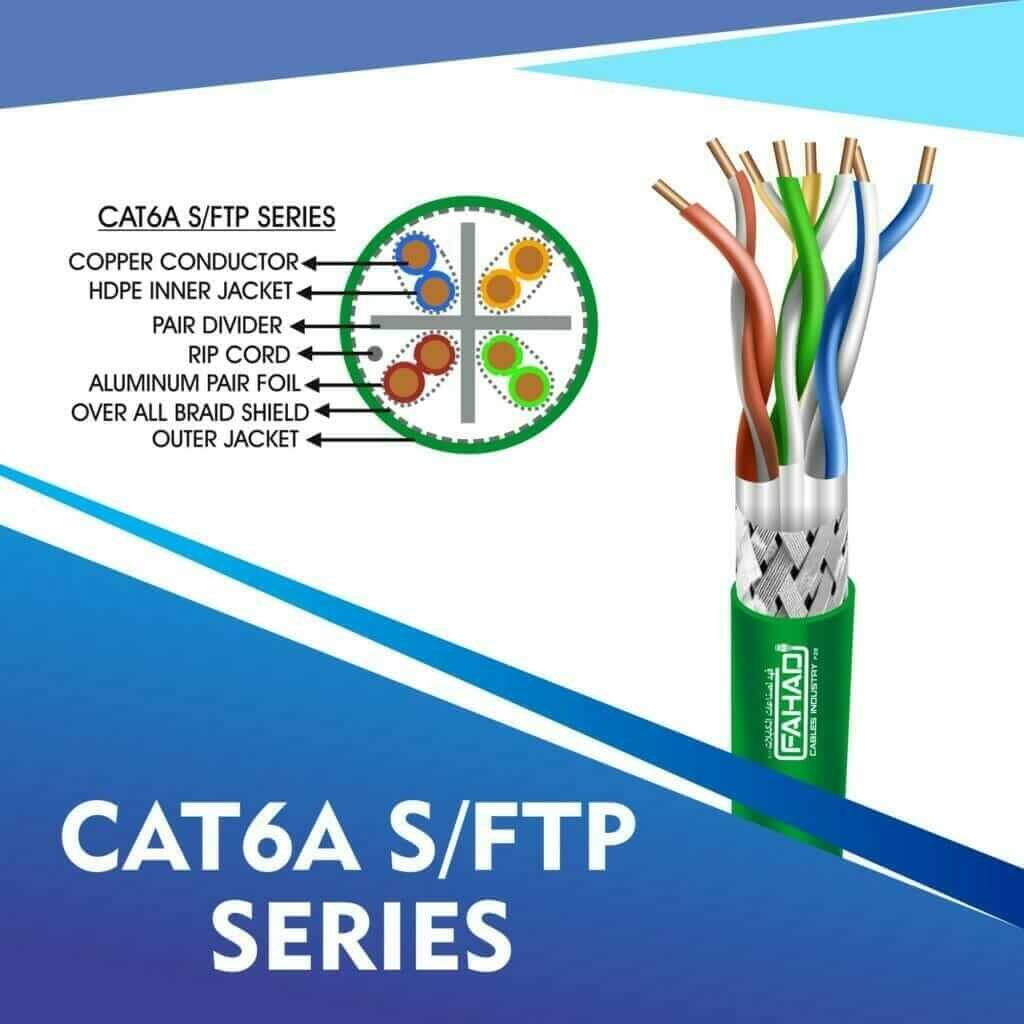
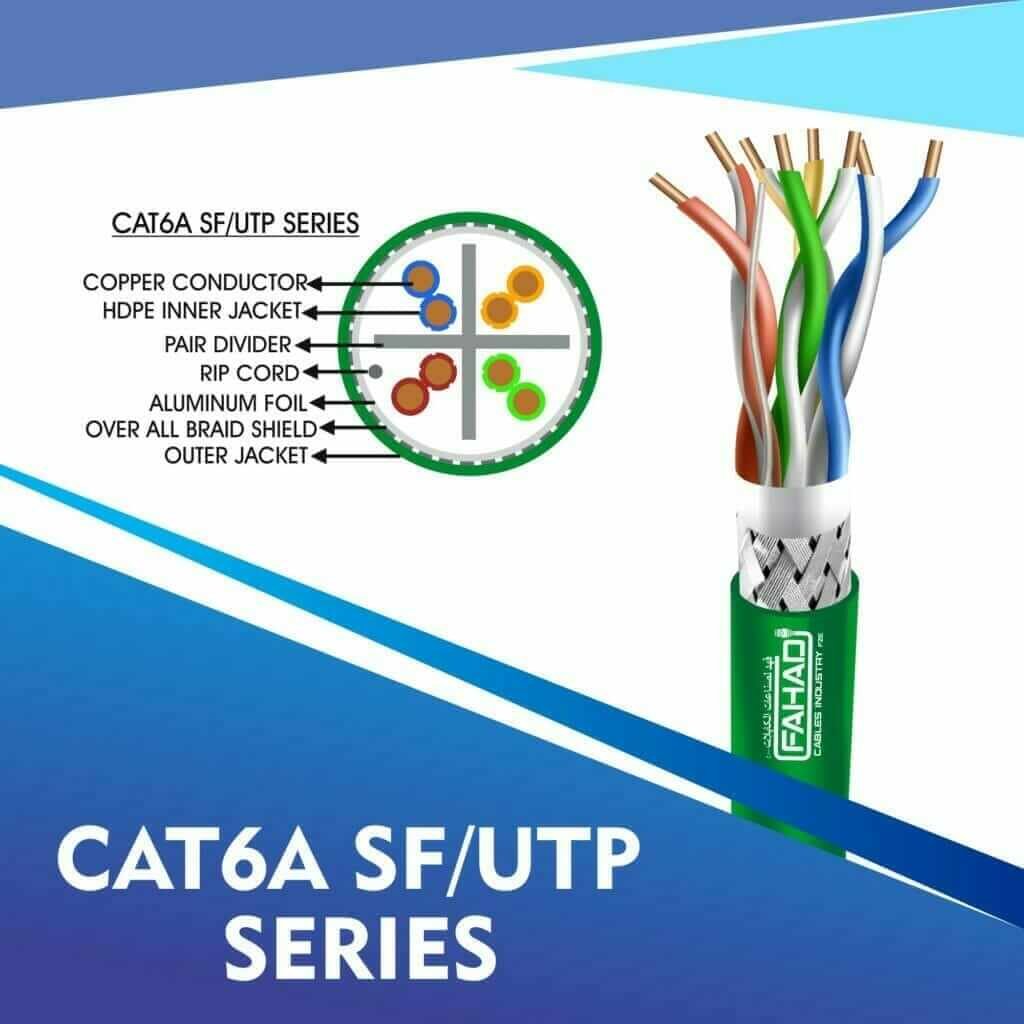
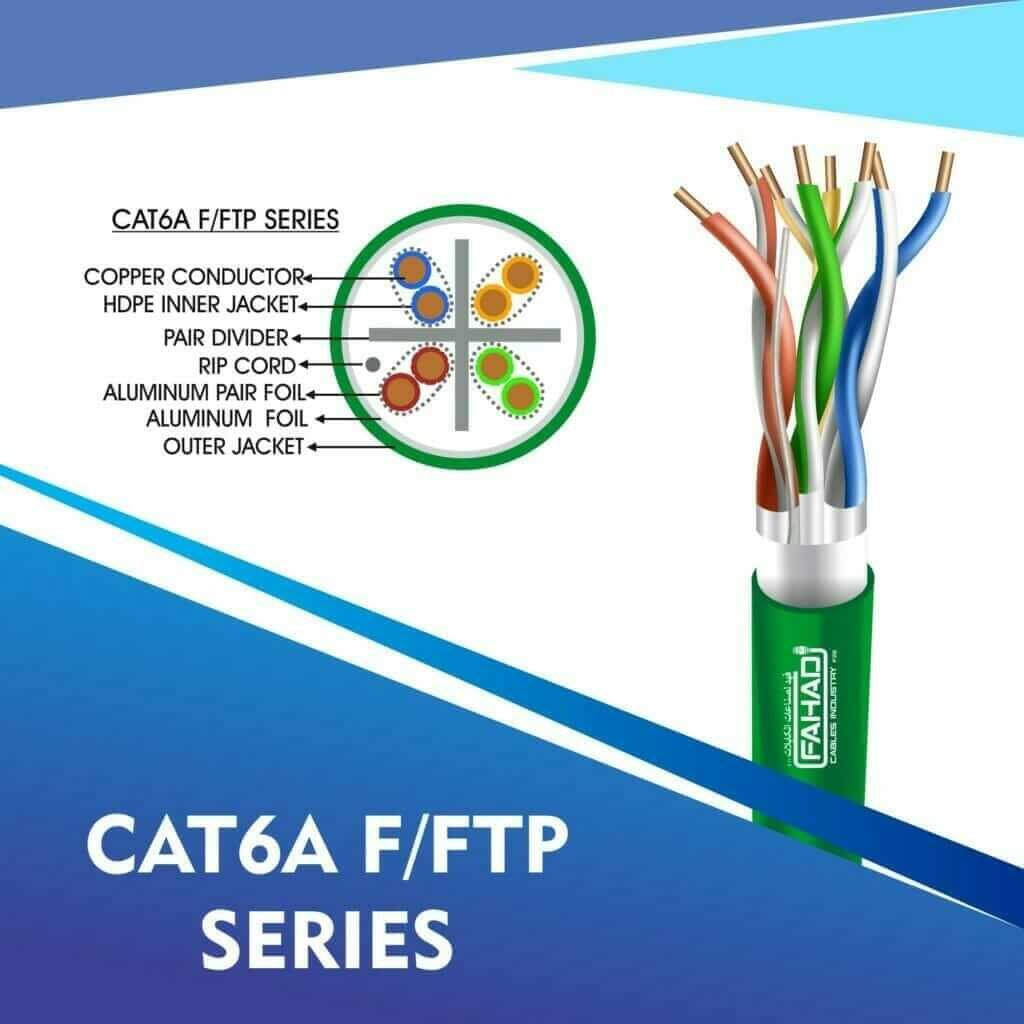
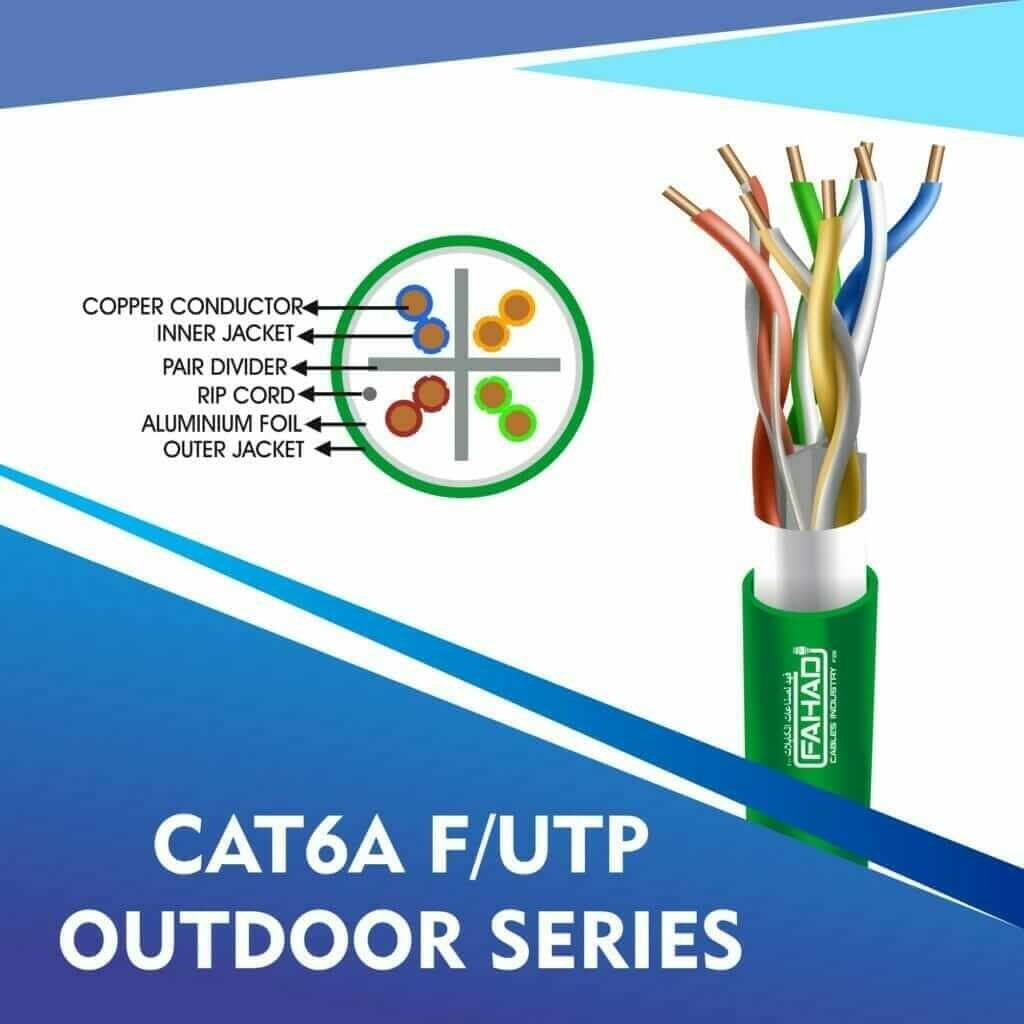
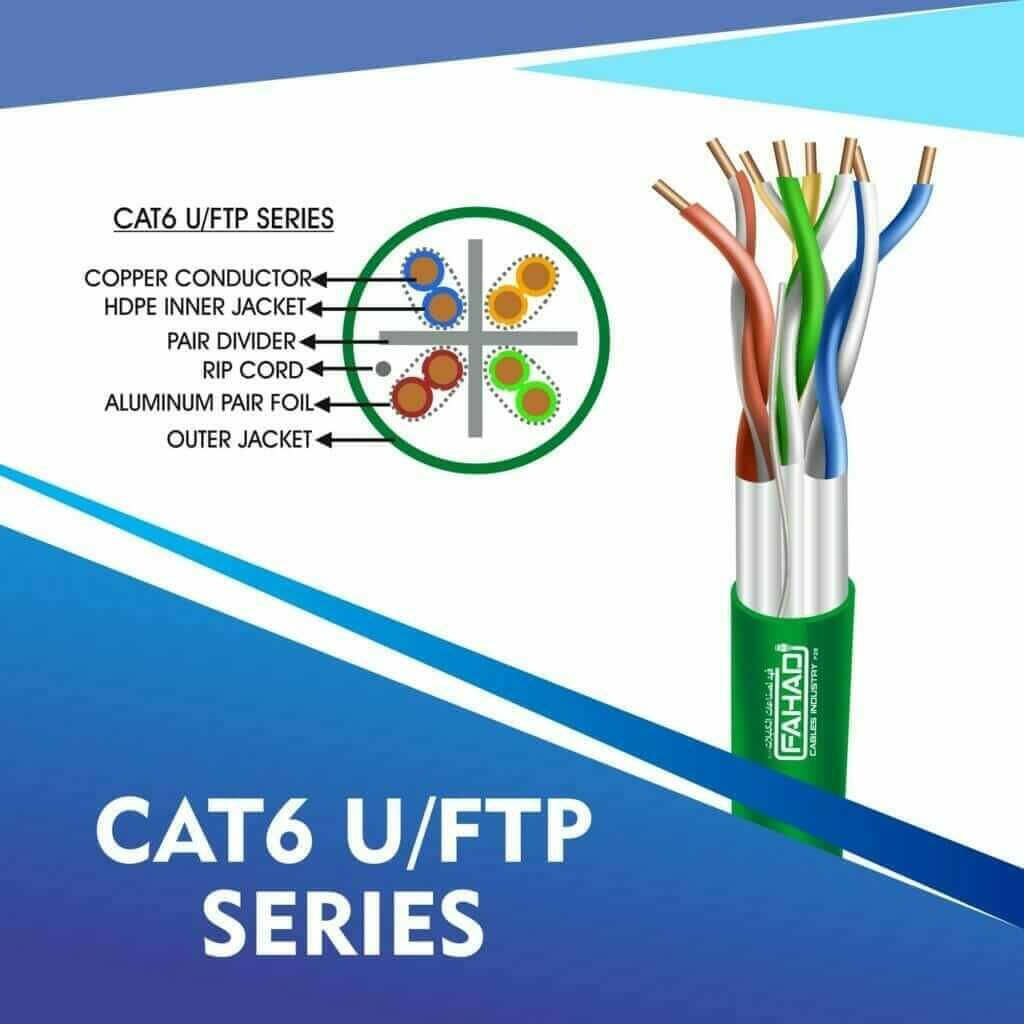
Durability is also a key feature of the Cat6 S/FTP cables. These cables are built to withstand demanding conditions, which makes them suitable for both indoor and outdoor applications. The robust outer jacket protects against physical damage and environmental factors, contributing to a longer lifespan and more reliable performance. Additionally, these cables comply with international standards, making them a trusted choice for businesses seeking solutions that meet regulatory requirements.
Fahad Cables Industry FZE has incorporated various technological innovations into the Cat6 S/FTP series to enhance performance. This includes the use of high-quality materials that further improve signal integrity and reduce attenuation over distances. By integrating these advanced features, the Cat6 S/FTP series guarantees a network connection that is not only fast but also stable and secure, ultimately catering to the evolving needs of businesses.
Applications of Cat6 S/FTP Cables
Cat6 S/FTP cables manufactured by Fahad Cables Industry FZE offer a versatile solution suitable for a variety of network environments. Their construction allows for optimal performance in data transmission, making them an ideal choice for data centers, office buildings, and home networking setups. The enhanced shielding of these cables significantly reduces electromagnetic interference, ensuring that data integrity is maintained even in complex networking scenarios.
In data centers, where high-speed and reliable connections are crucial, Cat6 S/FTP cables enable efficient data transfers and minimize latency. Their ability to support higher bandwidths ensures that large volumes of data can be moved swiftly, aligning with the demands of modern data-driven applications. As data centers increasingly become the backbone of enterprise operations, the significance of using high-performance cables like Cat6 S/FTP cannot be overstated.
In office buildings, where numerous devices are connected to a network, the effectiveness of communication depends heavily on the quality of the network infrastructure. Cat6 S/FTP cables can accommodate multiple devices without compromising speed, making them an excellent choice for large firms with heavy internet use. Whether it’s connecting computers, printers, or VoIP systems, these cables provide the reliability needed for seamless operations.
Furthermore, when it comes to home networking, Cat6 S/FTP cables prove to be invaluable, especially for households that rely heavily on streaming media and online gaming. The high data transmission rates supported by these cables enhance the streaming experience, allowing for high-definition content without buffering. Similarly, gamers benefit from reduced lag and improved connectivity, which can be decisive for competitive play.
In conclusion, the versatility and performance of Cat6 S/FTP cables make them suitable for various applications—from data centers to home networks—while catering to high-speed demands of streaming and gaming activities. This makes Fahad Cables’ offerings a smart investment for both personal and professional environments.
Comparing Cat6 S/FTP with Other Cable Types
When evaluating network cables, the choice between Cat6 S/FTP and other types such as Cat5e and Cat6a remains pivotal for effective connectivity. Each cable type presents unique advantages and disadvantages, impacting overall performance and costs, which should be considered based on specific requirements.
Cat5e cables, a popular choice for many applications, offer speeds up to 1 Gbps and a bandwidth of 100 MHz. While they are sufficient for basic home and small office needs, their limitations become apparent in high-demand environments where data transfer speeds are crucial. Cat6 S/FTP cables, on the other hand, support speeds up to 10 Gbps with a bandwidth of 250 MHz. The enhanced shielding in Cat6 S/FTP helps reduce crosstalk and interference, making it a preferable option for users requiring higher data rates and stable connections.
In contrast, Cat6a cables extend the capabilities of Cat6 with support for 10 Gbps speeds over longer distances (up to 100 meters). They also come with improved shielding similar to Cat6 S/FTP, offering excellent protection against external interference. However, this enhanced performance typically results in higher costs and greater physical bulkiness, which might not be required in every installation scenario.
Cost is another essential factor to consider. While Cat5e cables are generally the most economical, opting for Cat6 S/FTP may entail a greater initial investment. Yet, this cost can be justified by the superior performance and longevity, especially in networking environments where demand for speed and bandwidth continues to escalate.
In specific use cases, such as data centers or environments with significant electronic interference, Cat6 S/FTP cables present clear advantages over both Cat5e and even Cat6a. Understanding these differences will empower users to make informed decisions, ensuring that their chosen cabling meets both current and future networking needs.
Benefits of Choosing Fahad Cables’ Products
When it comes to selecting network cables, the advantages of choosing Fahad Cables Industry FZE are manifold. The primary benefit is the renowned product quality. Fahad’s Cat6 S/FTP Series Network Cables are designed with precision, utilizing superior materials that ensure durability and optimal performance. The construction adheres to international standards, which directly translates to enhanced signal integrity and reduced interference, making them an excellent choice for both commercial and residential applications.
In addition to high-quality products, Fahad Cables is recognized for its exceptional customer service. The dedicated support team responds swiftly to inquiries and provides assistance with installation and technical requirements. Customers frequently commend the company’s responsiveness and the comprehensive assistance provided. This level of service fosters a solid relationship between the brand and its clientele, ultimately reflecting positively on user satisfaction.
Moreover, Fahad Cables offers a robust warranty option for their products, ensuring that customers have peace of mind with their purchase. This commitment to customer satisfaction reduces concerns regarding potential defects or performance issues. It demonstrates the company’s confidence in their products and their dedication to standing behind them long after the initial sale.
The market reputation of Fahad Cables reinforces the advantages of their offerings. Positive customer testimonials and case studies highlight experiences that showcase reliability, performance, and satisfaction. Many users report significant improvements in their network performance after switching to Fahad’s Cat6 S/FTP cables, noting enhanced speed and reduced latency. These real-world examples serve as compelling evidence for prospective buyers looking to make an informed choice. Overall, selecting Fahad Cables Industry FZE means investing in quality, reliable customer support, and a reputable brand that prioritizes its customers.
Installation Guidelines for Cat6 S/FTP Cables
Installing Cat6 S/FTP cables properly is essential for ensuring optimal performance and reliability in your network. Before beginning the installation process, it is important to gather the necessary tools. A cable stripper, punch-down tool, wire cutters, and a crimping tool are essential. Additionally, acquiring a network cable tester can help verify installation quality and functionality.
When it comes to installation, planning the cable route is critical. Ensure that cables are kept away from potential sources of interference, such as fluorescent lighting, large motors, or other electronic devices. Maintaining a distance of at least 3 inches from electrical wiring is recommended to avoid signal degradation. Keep bends and turns gradual; anytime a cable is sharply twisted or bent, it could lead to performance issues down the line.
One common pitfall during installation is exceeding the maximum cable length. For Cat6 S/FTP cables, the maximum run length is 100 meters, which includes patch cables. Exceeding this can lead to signal loss and reduced performance. Properly measure and cut cables to avoid waste, and always allow some additional length to accommodate any adjustments or changes.
Another important consideration is the termination process. Ensure that you maintain the twisted pairs as close to the termination point as possible. Untwisting wires can introduce crosstalk and negatively impact network performance. If you are not confident in your ability to terminate cables correctly, it is often advisable to seek the assistance of professionals who have the expertise and tools necessary to ensure proper connection.
Ultimately, while some individuals may opt for DIY installation for cost-effective reasons, engaging professional services can often result in a more reliable network setup. Professionals are familiar with best practices and can help avoid common errors, ensuring that Cat6 S/FTP cables operate at their full potential.
Maintenance Tips for Longevity
Maintaining Cat6 S/FTP network cables is crucial for ensuring their longevity and optimal performance. Regular inspections are an essential part of this maintenance routine. It is advisable to check the cables periodically for any signs of wear or damage, such as fraying or kinks. If during the inspection you notice any visible damage, it is essential to replace the affected cables promptly to prevent disruptions in network connectivity. Additionally, network performance can be compromised due to loose connections, so ensuring that all connectors and terminations are secure is vital.
It is also important to handle Cat6 S/FTP cables carefully to avoid physical damage. When installing or relocating cables, always ensure they are routed correctly, avoiding sharp bends and excessive tension. Sharp bends can severely impact the performance of the cables, potentially leading to data transmission issues. Employing proper cable management techniques, such as using cable ties or trays, can also help keep your cables organized and protected from any physical stress.
Environmental factors play a significant role in the longevity of Cat6 S/FTP cables. Moisture, extreme temperatures, and exposure to sunlight can deteriorate the integrity of the cables, affecting their performance. When installing network cables, it is crucial to choose locations that provide protection from harsh environmental elements. Using protective conduits or enclosures can guard against moisture and physical damage, thus extending the life of your cables. Additionally, maintaining a stable temperature range in areas where cables are located can further enhance durability.
By incorporating these maintenance practices—conducting regular inspections, handling cables with care, and addressing environmental concerns—users can significantly improve the lifespan and performance of their Cat6 S/FTP network cables, ensuring a reliable network connection for years to come.
Future Trends in Networking Technology
As we look ahead, the landscape of networking technology continues to evolve, driven by the increasing demand for faster and more reliable connectivity. One particular area of interest is the progression towards higher bandwidth and reduced latency in network infrastructures. The Cat6 S/FTP series cables, known for their ability to support gigabit speeds and beyond, are crucial in accommodating these trends. The growing reliance on high-definition streaming, cloud computing, and remote work necessitates cables that can handle more data at higher speeds.
Future developments indicate a clear shift towards the implementation of 10Gbps Ethernet and beyond. As more devices become interconnected through the Internet of Things (IoT), the need for robust cabling solutions like the Cat6 S/FTP will become increasingly relevant. These cables provide superior shielding, minimizing interference and ensuring consistent performance in densely populated networks. Additionally, advancements in technology, such as the use of AI and machine learning, are set to enhance network management and security, emphasizing the importance of quality cabling to support these innovations.
The anticipated rollout of 5G technology also presents both challenges and opportunities for cabling manufacturers. With 5G networks delivering remarkably fast wireless connections, there will be a significant pressure on wired infrastructures to complement these speeds. Manufacturers of Cat6 S/FTP cables may find themselves exploring innovative materials and designs to maintain a competitive edge in a rapidly changing market. Moreover, consumers will benefit from these advancements through enhanced streaming experiences, improved online gaming, and seamless connectivity across devices.
In conclusion, the future of networking technology appears poised for unprecedented growth and transformation. The ongoing evolution towards faster speeds and enhanced performance demands not only robust cables like the Cat6 S/FTP series but also fosters innovation among manufacturers to meet consumer expectations. As we embrace these changes, understanding their implications for both the industry and users will be essential in navigating this dynamic digital landscape.

